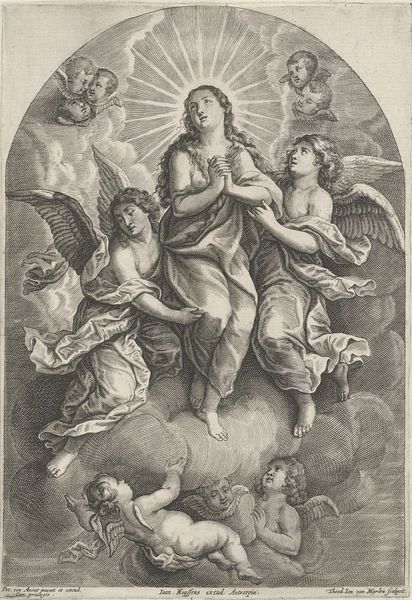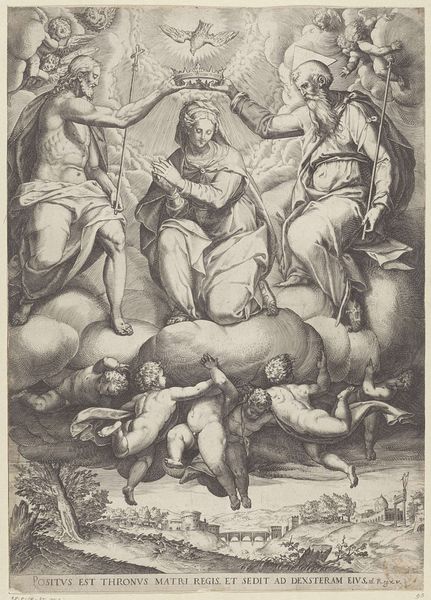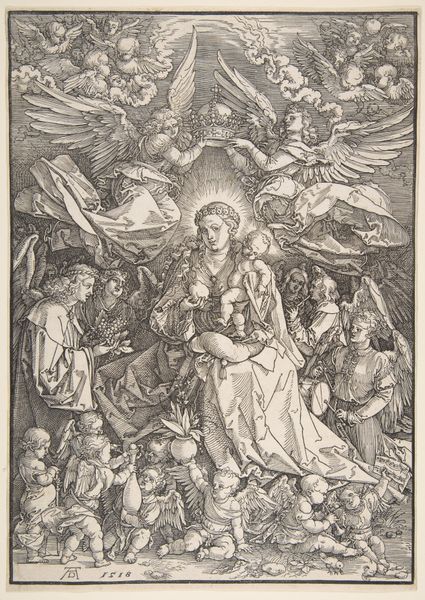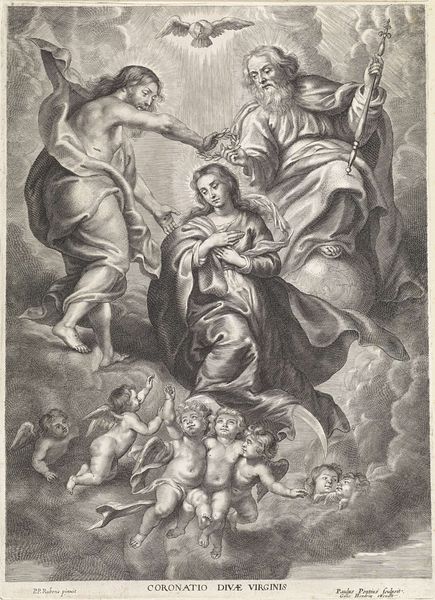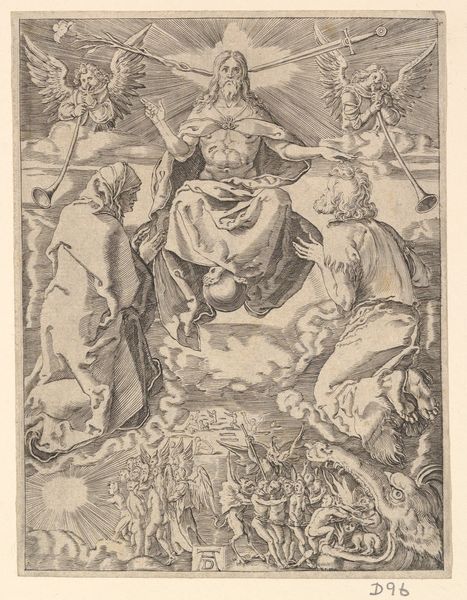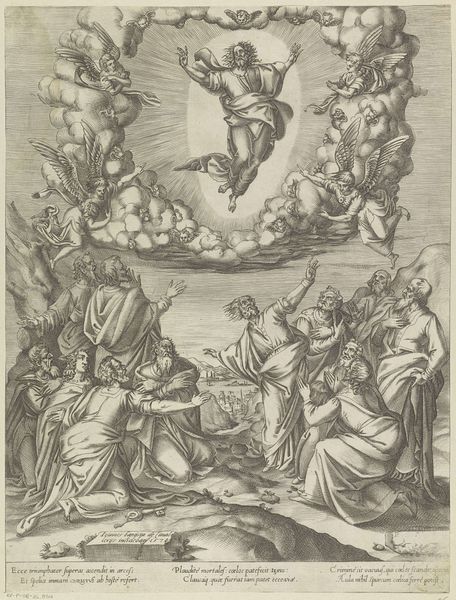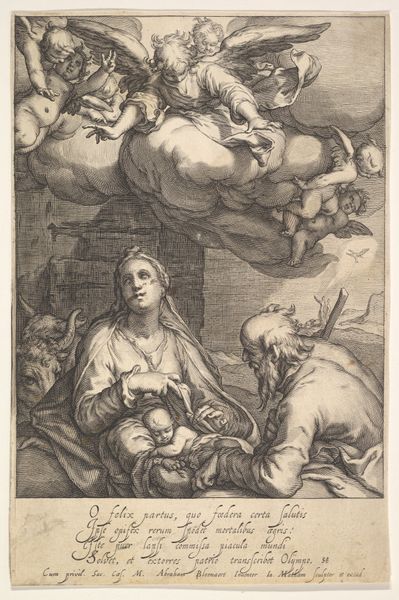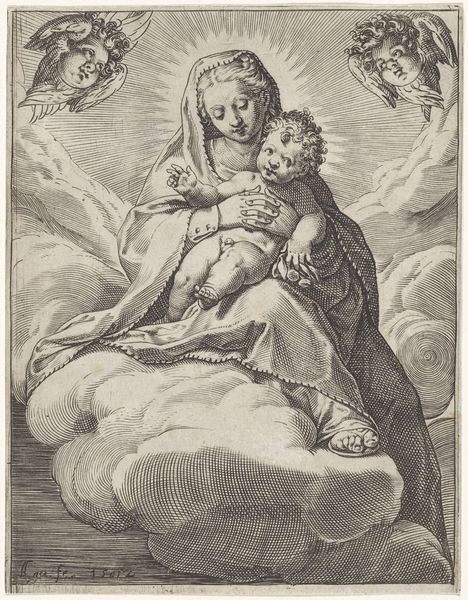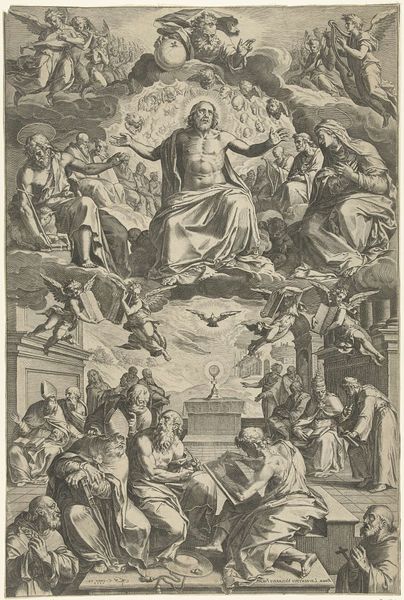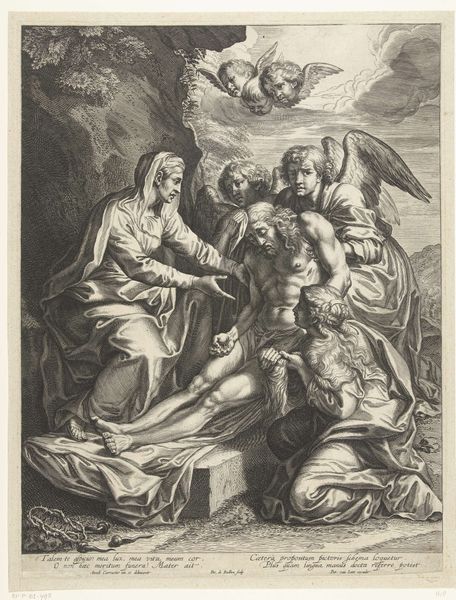
print, engraving
#
allegory
#
baroque
# print
#
figuration
#
history-painting
#
engraving
Dimensions: height 210 mm, width 144 mm
Copyright: Rijks Museum: Open Domain
Editor: Here we have Wenceslaus Hollar's "Hemelvaart van Maria," made between 1622 and 1652. It's an engraving, and the image depicts the Virgin Mary ascending to heaven surrounded by angels. I'm immediately struck by the detail achieved with just lines and shading. What catches your eye about this print? Curator: It's important to look at the labour involved in this piece, thinking about the social context of printmaking at the time. How might the widespread availability of prints such as this one have impacted the consumption of religious imagery and the role of the church as a mediator of faith? Consider the tools, the paper, the ink—these materials situate the artwork within a specific network of production and distribution. Editor: So, the material used helps determine the audience and access. Curator: Precisely. This engraving also opens the conversation about the accessibility of art. Think about the relative costs. An oil painting by a master remained unattainable to all but the elite. An engraving, even painstakingly crafted as this was, democratized the image, enabling broader audiences to possess and contemplate these religious narratives. Where does it sit in terms of 'high art' vs accessible commodity? Editor: That’s fascinating! I never really considered how much the medium affects accessibility and consumption. Curator: And don't forget the cultural impact. By reproducing images, prints spread ideas and artistic styles across Europe and beyond. Consider the reproductive nature of the engraving; is Hollar simply copying, or is he intervening artistically? Where does it stand between copy and original? Editor: I guess, knowing that an engraving like this circulated more widely gives me a completely different view of the image and its role in society back then. It’s less about divine artistry, and more about how labor and access shaped religious belief. Curator: Indeed. Looking at it through the lens of materials and distribution highlights how art is fundamentally connected to social, economic, and even religious structures.
Comments
No comments
Be the first to comment and join the conversation on the ultimate creative platform.
